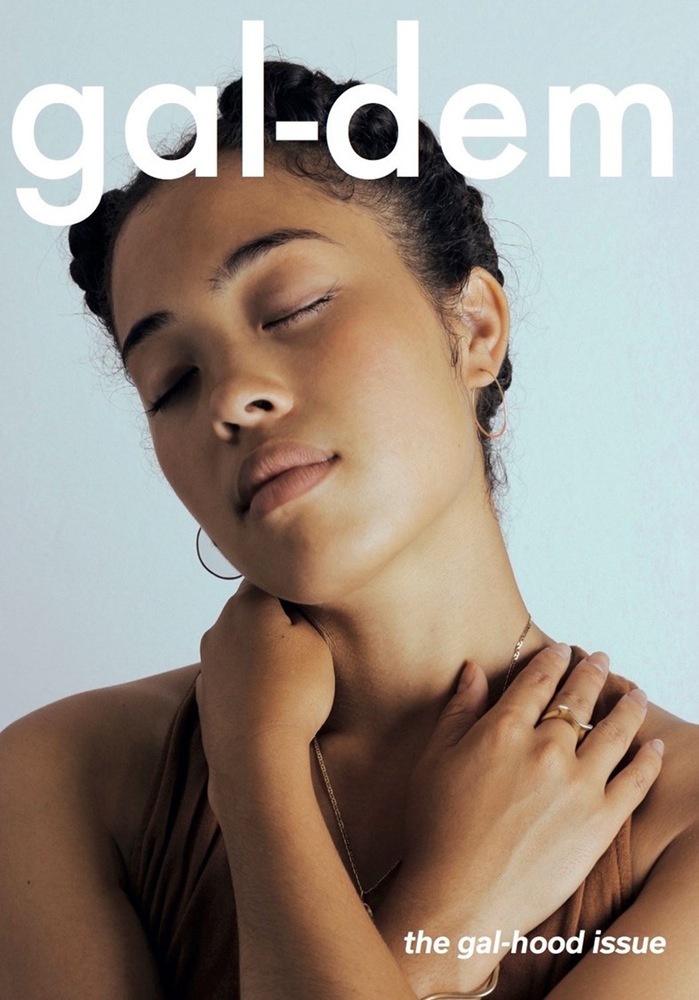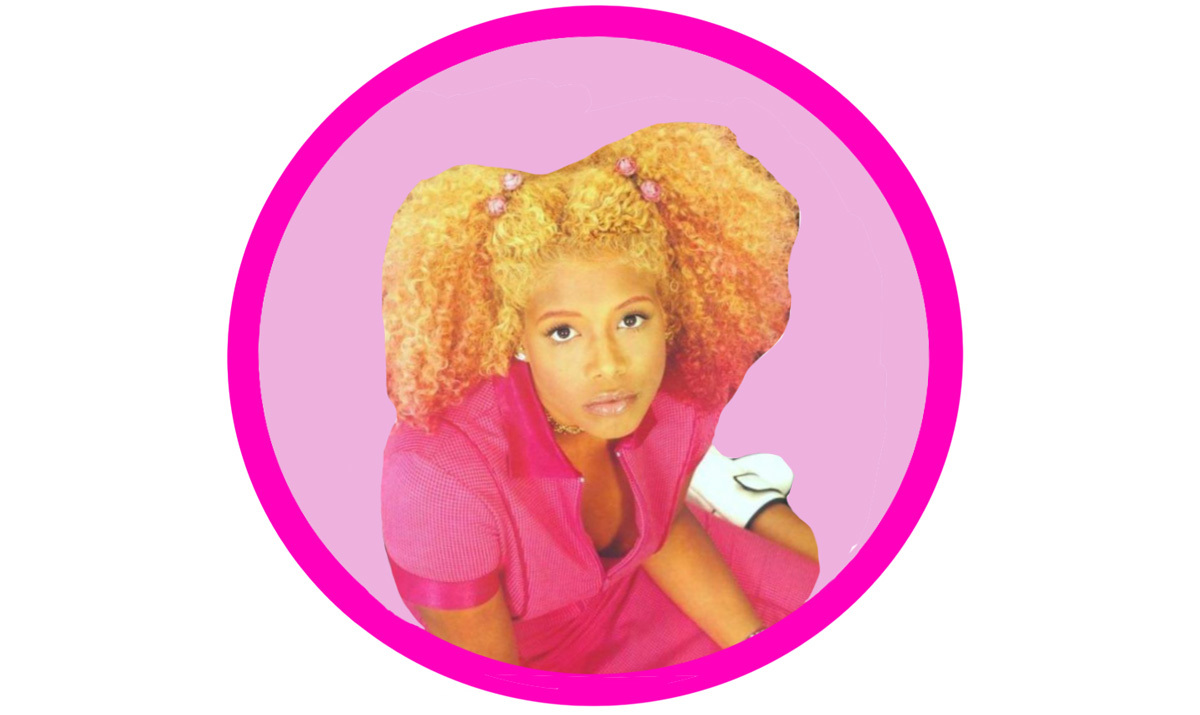Frustrated with the lack of representation and diversity in the media, online platform gal-dem has taken the situation into their own hands, providing an online space for women of colour for the past year. Through music, fashion, art and social issues, gal-dem is as much about working with and promoting the work of women of colour as it is about exploring the issues they face and now, celebrating their 1st birthday, have created their first print issue.
Focusing on the theme of ‘gal-hood’, issue number one explores what it’s like to grow up as a girl of colour. “Our first print magazine is a tribute to everything we hold sacred, that which has brought us together – a celebration of girlhood, female friendship and growing up,” explains founder Liv Little in the editor’s letter. Alongside featuring a range of talented women such as Joyce Wrice, Kelsey Lu and Ibiye Camp, the first issue of gal-dem also shines a light on the stories that are rarely seen on the cover or in the agony aunt columns of most glossy magazines. It starts important and much-needed conversations, from essays dispelling the myths surrounding hijabi women to articles on sisterhood in the arts. Finally, there’s something for all the girls out there that are bored with not seeing themselves represented on the pages of magazines. Take an exclusive look at an article from the issue below, where Grace Barber-Plentie discusses how early noughties music videos filled the blanks of her black girlhood…

The early 2000s were an odd time to grow up. Fashion was all over the place – for every Cam’ron, we had a (pre-Harijuku) Avril Lavigne. Cult after-school series’ such as The Story of Tracy Beaker dominated the television, and you couldn’t walk five minutes without hearing someone discussing “the weapons of mass destruction”.
Pop culture aside, growing up in the new millennium was, in hindsight, a particularly disorientating time as black girl growing up in an extremely white city. While the rest of the entertainment world may have been a little odd, I have one constant, one true love while I was growing up – music videos. One of the vivid memories of my childhood years is centred around a J.Lo video.
I remember staying in a beautiful apartment overlooking the Eiffel Tower one year, but being unable to give the famous landmark the attention it deserved because I was too busy focusing all my attention on the Jenny From The Block video. As well as inducing an unhealthy obsession with Jennifer Lopez (the All I Have video was another great obsession of mine), many music videos of the early 2000s were representing something that I was sorely missing from my life – a non-white (and in particular, black) concept of girlhood.
Girlhood is a sense of unity and carelessness. Of finding beauty in the mundane and everyday. I have a back-catalogue of music videos from my youth that portrayed this. I look back at Kelis’ Millionaire with fondness. It’s one of those classic “day in the life” music videos we used to see so much of back in the day, preoccupied with following a group of young black girls around their neighbourhood. They braid their hair, amuse themselves with clapping games, eat fast food, and joke around; shot with a lens flare that would make any budding cinematographer jealous. It’s Carefree Black Girl before the term existed, and it’s a beautiful thing to look at.
The image of girlhood in music videos extends across the world – it was a fundamental theme in British music videos back in the day. Many a lucky girl spent their afternoons as I did, glued to the telly watching Cleopatra Comin Atcha.The music video for the theme song is resplendent in black British girlhood:hair-braiding and bedroom dancing galore.
While I couldn’t identify with lyrics discussing a hip-hop addiction, traditional Caribbean foods and large families – in the visual for 1980 by west London native, Estelle – I could find comfort in imagining what an upbringing like that might have been like. I’ll always remember the vivid imagery of that video: chilling on the front steps of her house, having family members over and generally messing around.
The idea of black girlhood was alien to me whilst growing up, but it was aspirational thanks to these music videos. I do mourn my lack of a “black” girlhood as opposed to one that seemed raceless. Now, as an adult, I can’t take back the years I spent wondering where my large Caribbean family are, looking for my black girl gang to help me slick down my unruly edges.
It’s a great comfort for me to know that, thanks to the work of artists, girls like me can still see non-white girlhood existing in music videos, and know that it truly exists.
Even to this day, I’m glad to see the tradition of representing non-white girlhood in music videos is now even more widely accessible. Contemporary artists, like Princess Nokia, who has consistently driven a non-white sense of girlhood in her music videos – from the cyber-themedNokia, to the poignant Young Girls, a song and video dedicated to her girlhood of her indigenous heritage, to Tomboy, dedicated to the carefree girlhood of her New York upbringing.
Destiny Frasqueri, who is behind Princess Nokia, always centres women in her videos, and also runs Smart Girls Club, an intersectional feminist collective. Frasqueri’s love of women, particularly women of colour, runs through her music videos, making her an artist that I can easily feel affinity with.
This is also true of Junglepussy who is, unsurprisingly, a friend of Frasqueri’s, who plays around with multiple ideas of how non-white girlhood should be represented. In the video for Nah, she invokes traumatic hair untangling sessions between your mum’s legs, and marches through the streets being pushed in a trolley by her girl gang.
By projecting the images of young carefree non-white women, Junglepussy and Princess Nokia, just like their early noughties peers keep the idea of non-white girlhood alive. For those girls who are living through or have lived through their own non-white girlhood, it’s beautiful and important to see your own experiences being played out in the entertainment world. For those such as myself who may not have had the chance to live them, through these videos we can at least live vicariously, providing us with our own imagined versions of non-white girlhood, pressed up against TV screens mesmerised by J-Lo and Kelis.
Order the first print issue here.
Credits
Text Grace Barber-Plentie
